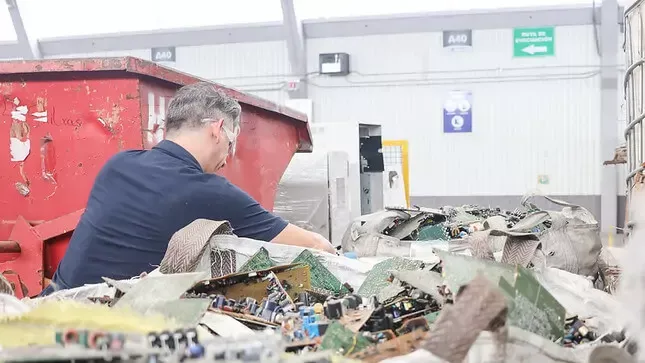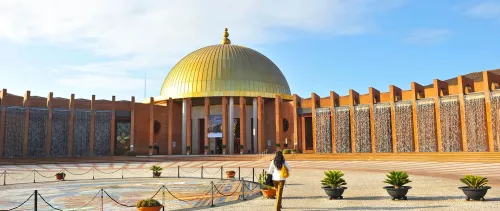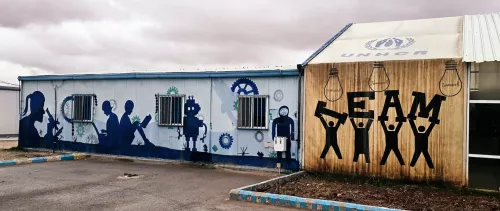
UNIDO via Flickr
Costa Rica’s Solirsa plant processes a steady stream of e-waste – everything from discarded computers, smartphones, and tablets to disused batteries, printers, chargers and other electronic devices.
The Central American country of five million inhabitants is known for its rich biodiversity. This vital waste-management operation northwest of the capital, San José, is helping Costa Rica tackle the dirty side of digital transformation and close the production loop for information and communication technologies (ICTs).
Operators at Solirsa – an acronym for Integral Recycling Solutions – manually dismantle dust-coated equipment and separate the parts based on component materials. E-waste shipments are then prepared for recycling, smelting, or chemical treatment to create new products at other facilities.
Costa Rica generates 67,000 tonnes of e-waste annually – the region’s highest output per inhabitant. But the country also collects and treats 8 per cent of this, the highest share across Latin America, according to its first regional e-waste monitor report.
The report is part of a project coordinated by the United Nations Industrial Development Organization (UNIDO), which aims to extend technical and financial assistance to 13 Latin American countries to better manage digital discards. Worldwide, e-waste has become one of the most challenging consequences of rapid technology uptake.
A fundamental building block
How to manage e-waste sustainably was one of the challenges discussed at the Global Standards Symposium held earlier this year by the International Telecommunication Union (ITU). The problem is particularly acute in developing countries, which may receive waste shipments from richer parts of the world.
“A large share of used consumer electronics from developed countries are shipped to the Global South for processing and recycling, due to less strict environmental rules and lower costs,” explained Susanne Pedersen, Director of the Copenhagen Climate Centre for the United Nations Environment Programme (UNEP).
Annual e-waste production is projected to swell to 74.7 million metric tonnes (Mt) in 2030, up from an estimated 53.6 Mt in 2019.
In the long run, achieving environmental sustainability will depend on committing to the circular economy, incorporating environmental considerations into national digital transformation strategies, and adopting relevant international ICT standards, symposium participants said.
In its Connect 2030 agenda, ITU set a target to increase the global e-waste recycling rate to 30 per cent and raise the percentage of countries with e-waste legislation to 50 percent by 2023.
“Standards are a fundamental building block for shaping a sustainable digital transformation,” said Paolo Gemma, co-Chairman of the ITU Focus Group on Environmental Efficiency for Artificial Intelligence and other Emerging Technologies. “They can help define what is sustainable and provide the necessary guidance to implement it.”
Tech companies and organizations, he added, need to accelerate their own net-zero efforts and simultaneously “see the potential of ICTs to help other sectors achieve sustainability.”
A language to address everyone
Digital technologies and services could account for as much as one-fifth of global electricity demand by 2030, with one-third of that coming from data centres alone, experts say.
The Focus Group co-chaired by Gemma reports to ITU-T Study Group 5, ITU’s standardization expert group for environment, electromagnetic fields and circular economy – where governments, industry and academia are working together on international standards to curb the high energy consumption of ICTs.
These standards include sustainable power-feeding solutions for 5G networks, as well as smart energy solutions for telecom sites and data centres that prioritize the intake of power from renewable energy sources. They also cover the use of AI and big data in optimizing data centre energy efficiency and innovative techniques to reduce the energy required for data centre cooling.
Another new standard provides new power-supply technologies and specifications to promote the upgrade of industry technologies towards greener solutions.
Even if environmental impact varies from place to place, international standards can unite people, countries and regions, enabling them “to talk the same language” about digital sustainability, said Per Beming, Vice President of Standards & Industry Initiatives at Ericsson Group.
Digital transformation strategies, whether governmental or corporate, must leave no one behind, added Costa Rica’s Vice-Minister for Science, Technology and Telecommunications, Teodoro Willink. This means being applicable and accessible regardless of people’s origin, age, and social or economic status.
“Digital transformation is not sustainable if I can stream a 4K movie using Wi‑Fi at home in the city, but there are a half million rural children in Costa Rica who can’t access remote basic education,” he said. “It is not sustainable if my own aunt thinks she should change her phone just because it ran out of storage space.”
Learn more about key ITU standards for green ICTs, including emission-reduction trajectories for the ICT sector to cut its emissions by 45 per cent, in line with the 2015 Paris Agreement.


